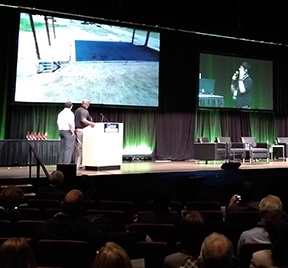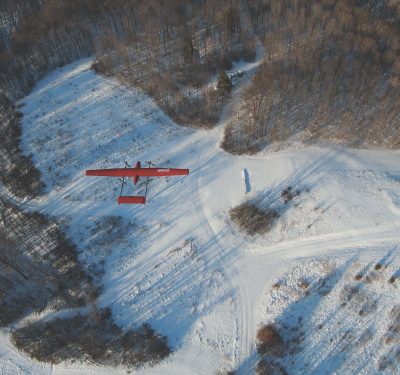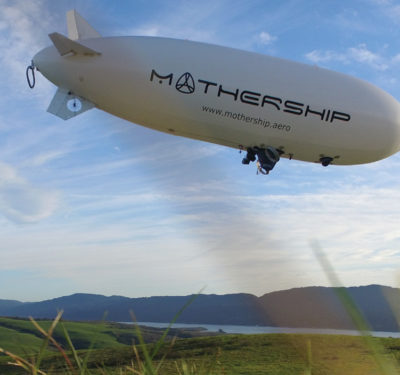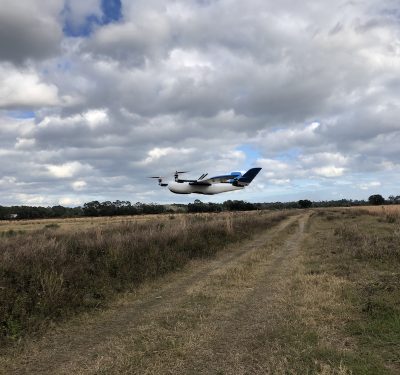Drone delivery is on the cusp of reshaping the logistics landscape by significantly reducing emissions and eliminating unnecessary packaging waste. With all-electric drones and direct delivery routes, Zipline’s Platform 2 offers a sustainable alternative to conventional last-mile delivery.
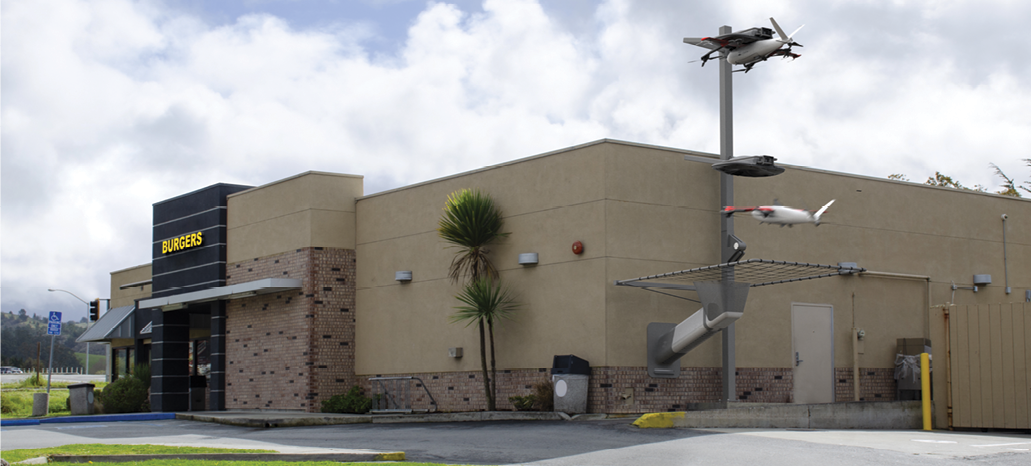
E-commerce goods, food delivery fulfillment and the supporting packaging and logistics generate vast amounts of carbon emissions and waste. According to World Economic Forum research, at current levels, urban last-mile delivery emissions are projected to rise by more than 30% in 100 major cities globally, potentially adding 11 minutes to daily commutes because of increased traffic congestion. In 2019, the global e-commerce sector consumed approximately 2.1 billion pounds of plastic packaging. Since then, this figure has doubled, estimated to reach 4.5 billion pounds by 2025.
Drone delivery firm Zipline’s Zip UAS are all-electric, zero-emission aircraft. The P2 Zip, which pairs a droid automated to complete deliveries with the drone, eliminates extraneous packaging for deliveries up to 5 pounds. According to company analysis, every Zipline flight reduces the carbon emissions of deliveries by an average of 97% compared to gas cars. Zips are provisioned with detect and avoid (DAA) technology, the company’s autonomous airspace deconfliction tool, which Zipline recently received approval from the FAA to commercially operate in the U.S. This represents a key step toward drone deliveries in the U.S. without visual observers at a time when reduction of emissions is more critical than ever.
Zipline’s P2 platform can deliver up to seven times as fast as traditional automobile delivery and can complete 10-mile deliveries in about 10 minutes. As they prepare to expand commercial BVLOS operations to the Dallas metro area, IUS connected with Jo Mardall, Zipline’s head of engineering, to better understand the environmental sustainability proposition of expanded last-mile drone deliveries.
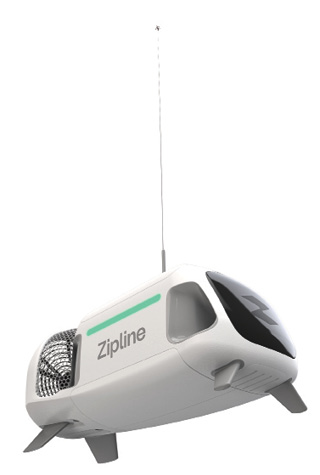
IUS: Let’s discuss Zipline’s services regarding sustainability progress—emissions targets and broad operational efficiencies that benefit the overall energy and logistics ecosystem.
MARDALL: There are really three main pillars informing why Zipline is a really great option, from a sustainability perspective, and transitioning the world to low carbon logistics. First, all our drones are fully electric, benefiting from the high efficiency of electric motors—around 85% efficiency range, compared to gas engines at roughly 25% efficient. As the grid transitions to renewables, we’re well-aligned with that trend.
Second, our drones fly directly to delivery points, which minimizes emissions significantly—about 30 times less than gas cars and over 10 times less than electric cars. Since our aircraft are incredibly light, just 1% of a car’s weight, we achieve substantial efficiency gains by avoiding the need for heavy materials. We’re firmly in the small UAS category.
Lastly, from a lifecycle perspective, our drones require far fewer materials than traditional vehicles. While a car might weigh 3,000 to 5,000 pounds, our drones are around 50 to 60 pounds. Cradle to grave, this vastly reduces emissions tied to materials sourcing, manufacturing and shipping.
IUS: The physical footprint of your vehicles is notably smaller. How does Zipline’s approach create efficiencies in logistics and supply chains, especially when comparing with conventional fleets?
MARDALL: Definitely, and from a sustainability standpoint, the efficiency gains are clear. Package deliveries, whether food or small items, are booming, yet they rely on century-old technology. With Platform 2, we aim to streamline this last-mile delivery. Unlike the “burrito in a private taxi” approach, where gas or even electric cars carry small items inefficiently, our service flies directly to delivery points without the excess emissions. Most household deliveries weigh less than five pounds, so our vehicle is perfectly sized for this job.
IUS: That’s a powerful point, and the simplicity of the solution eliminates a lot of packaging waste.
MARDELL: Absolutely. Our droid on Platform 2 requires no extra packaging—just place the item in the payload bay, and the droid delivers it precisely where needed. This avoids the mountain of cardboard we often see in recycling bins. I spend Tuesday nights breaking down boxes; with Zipline, we’re removing that hassle for consumers.
IUS: Speaking of real-world application, I recall beyond visual line of sight (BVLOS) deliveries recently received approval in North Texas. Could you share any early insights on efficiency gains there?
MARDALL: We’re thrilled to be preparing for BVLOS deliveries in real environments where we can make an impact. Platform 2 has a 10-mile delivery radius, a meaningful scale compared to short-distance car-based deliveries, which are often limited by driver supply and costs. In a city like Dallas, this radius makes a substantial difference, allowing us to serve people across vast metro areas efficiently. We recently reached a milestone, saving over 900,000 gallons of gasoline based on our delivery miles—this will soon exceed a million. To date, we’ve completed over 1.2 million deliveries, covering nearly 90 million autonomous miles globally.
IUS: Do you have any metrics on the electricity required per delivery?
MARDALL: Our aircraft operates efficiently, using roughly the same power as an electric car’s air conditioning. To complete a delivery, we use less than a kilowatt-hour of energy, a tiny fraction of household energy usage. We use less energy to deliver a box of spaghetti than to boil the water for it.
IUS: In terms of overall sustainable logistics operations at scale, what are some other important factors?
MARDALL: Longevity is key to sustainability. Our aircraft are built to last as long as a car, capable of multi-hundred-thousand-mile lifespans. In fact, we have drones well into the 400,000 to 500,000 mile range that are still in use. This lifespan comparison underscores the environmental trade-off: Using a lightweight drone for last-mile deliveries instead of a car is not only efficient but also long-lasting. Some of our “hardest working” drones have each completed thousands of deliveries and continue to operate reliably.
IUS: The maintenance and safety footprint of drones is also advantageous compared to cars, especially with fewer urban pollutants.
MARDALL: Absolutely. Beyond emissions, there’s reduced urban air pollution. Cars emit particulates that settle on everything, impacting air quality. By reducing the need for delivery vehicles on the road, we’re reclaiming urban spaces and minimizing health risks. Cities could allocate space for pedestrians and cyclists rather than delivery vehicles. It’s motivating to work on solutions that could shape a future where urban environments are cleaner and more efficient—building that world we all want to live in.


